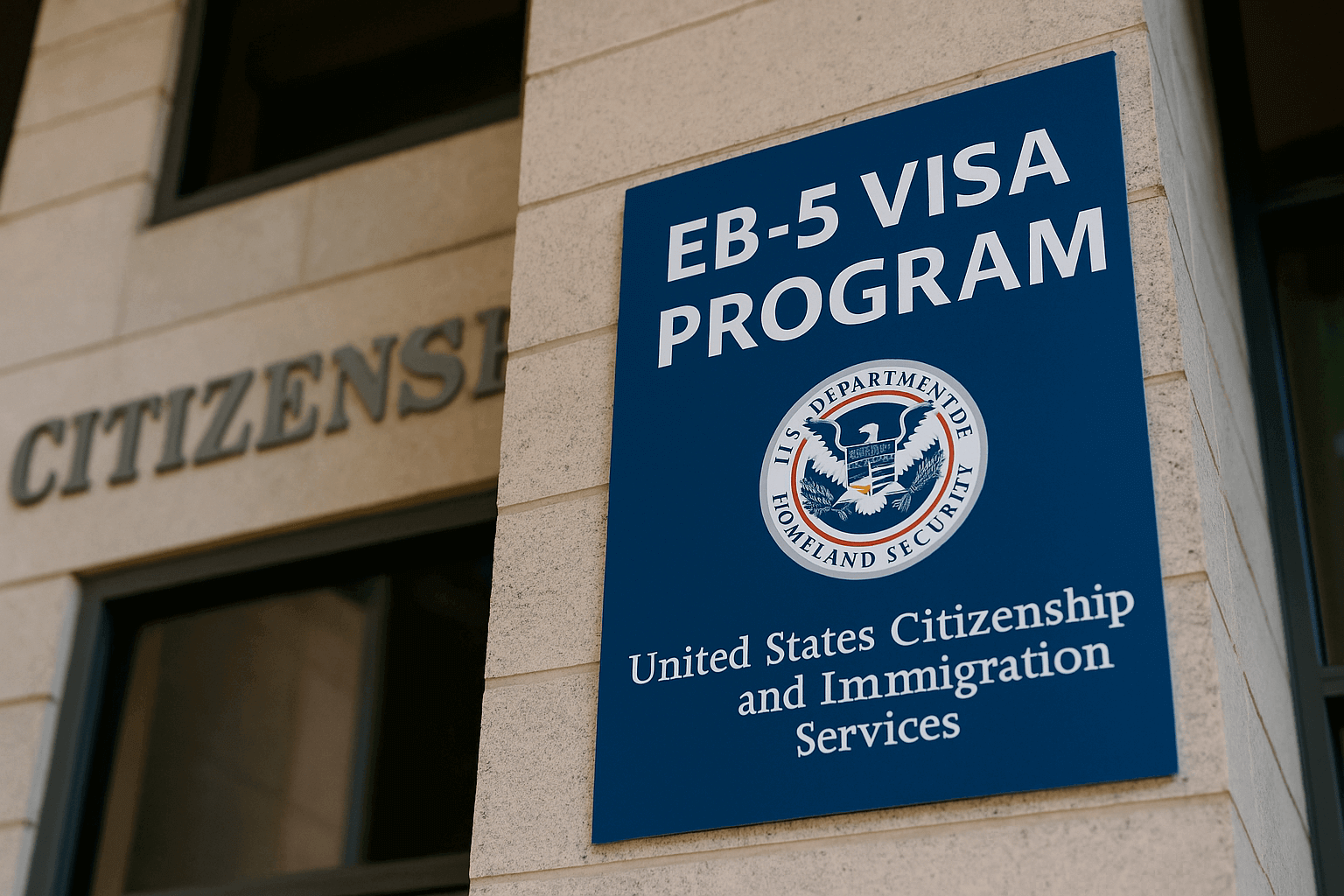
An EB 5 visa is a term used for investment projects foreign investors fund through the EB-5 immigrant investor program. This program was created in 1990 to stimulate the U.S. economy and create jobs. To participate in an EB-5 project, foreign investors must have a capital investment of at least $500,000 into a qualified U.S. business venture.
The enterprises may be a sole proprietorship, limited or general partnership, business trust, corporation, or any other form of publicly or privately owned business structures.
If the investment creates 10 or more jobs, the investor and their family members will be eligible for a green card, allowing them to live and work permanently in the United States.

Regional Centers
A public or private economic organization in the United States that fosters economic growth and economic development is known as EB 5 regional center. Although EB-5 investors can establish their own New Commercial Enterprises, most EB-5 visa applicants typically invest through a Regional Center.
A project must accompany every application to the USCIS for regional center approval. USCIS chooses regional centers to take part in the Immigrant Investor Pilot Program.
Direct Investments
Any investment not made through a regional center program is considered an EB5 direct investment. Direct investments include things like creating your own company, buying an existing company, and making investments in an existing company.
Direct investments usually require a higher minimum investment amount than indirect investments and more hands-on involvement from the investor.
What Is the Future of Eb-5 Projects in the United States?
EB-5 remains an attractive financing option for commercial real estate developers in the United States. However, it has been challenging for the various EB-5 sector participants and the U.S. government to come to an agreement on how to improve the EB-5 program. This is why passing EB-5 legislation in Congress can be challenging, particularly the reauthorization of the own regional center designation.
According to industry analysts, a clause reauthorizing regional center investment is anticipated to be included by Congress in a February 2022 appropriations package initially expected in December 2021. These forecasts are speculative, of course, and prospective regional center investors could need to hold off on starting the EB-5 procedure for many more months.
For the direct EB 5 visa investments, the situation is very different. Government renewal is not a requirement for direct EB-5 investors. Many investors have learned to value the many benefits direct EB-5 development projects offer, including the possibility for higher returns and more influence over corporate operations.
For the direct EB 5 visa investments, the situation is very different. Government renewal is not a requirement for direct EB-5 investors. Many investors have learned to value the many benefits direct EB-5 development projects offer, including the possibility for higher returns and more influence over corporate operations.
Direct investors can still participate in the EB-5 program for as little as $500,000 even if USCIS appealed the court decision that reduced the investment requirement. In 2022, direct EB-5 projects are projected to continue to be popular.
EB-5 Visa Requirements-U.S. Citizenship by Investment
1. Qualifying InvestmentThe first requirement that must be met is the investment amount requirement, which states that applicants must invest at least $900,000 USD into a new commercial enterprise located within the United States or its territories.
The required minimum investment can be reducing to $500,000 if the investment is made into an area that has been designated as a “Targeted Employment Area” (TEA) or a “Regional Center” (RC).
A TEA is defined as an area with high unemployment rates or rural areas without adequate employment opportunities while RCs are entities that have been approved by USCIS and designated as such due to their ability to create jobs, attract investments from foreign countries, and stimulate economic growth within their region through job creation and capital investments.
Individuals looking for United States citizenship must submit Form I-485 and a fee of $1140, plus an additional cost for biometric services totaling $85. With these funds, applicants are one step closer to their goal of becoming United States citizens!
2. Job Creation RequirementIn addition to meeting the investment requirements outlined above, applicants must also demonstrate that their investments will fulfill atleast 10 full-time job creation requirements for U.S.-based employees within two years of receiving conditional green card status on their EB-5 application approval date.
These jobs must meet certain criteria such as being direct (jobs created directly by the applicant’s business venture), indirect (jobs created indirectly by increased demand due to the applicant’s business venture), and induced (jobs created indirectly due to increased spending resulting from direct and indirect employees).
Additionally, these jobs must remain in existence for at least two years after the initial two-year period has passed in order for applicants to maintain their conditional permanent resident status and eventually gain full permanent residence status in the United States upon fulfillment of all other applicable requirements under this program.
If you have any questions about whether you meet these qualifications then it is best practice always consult with financial advisors familiar with immigration law prior making any decisions regarding your eligibility for this type of visa application process.
